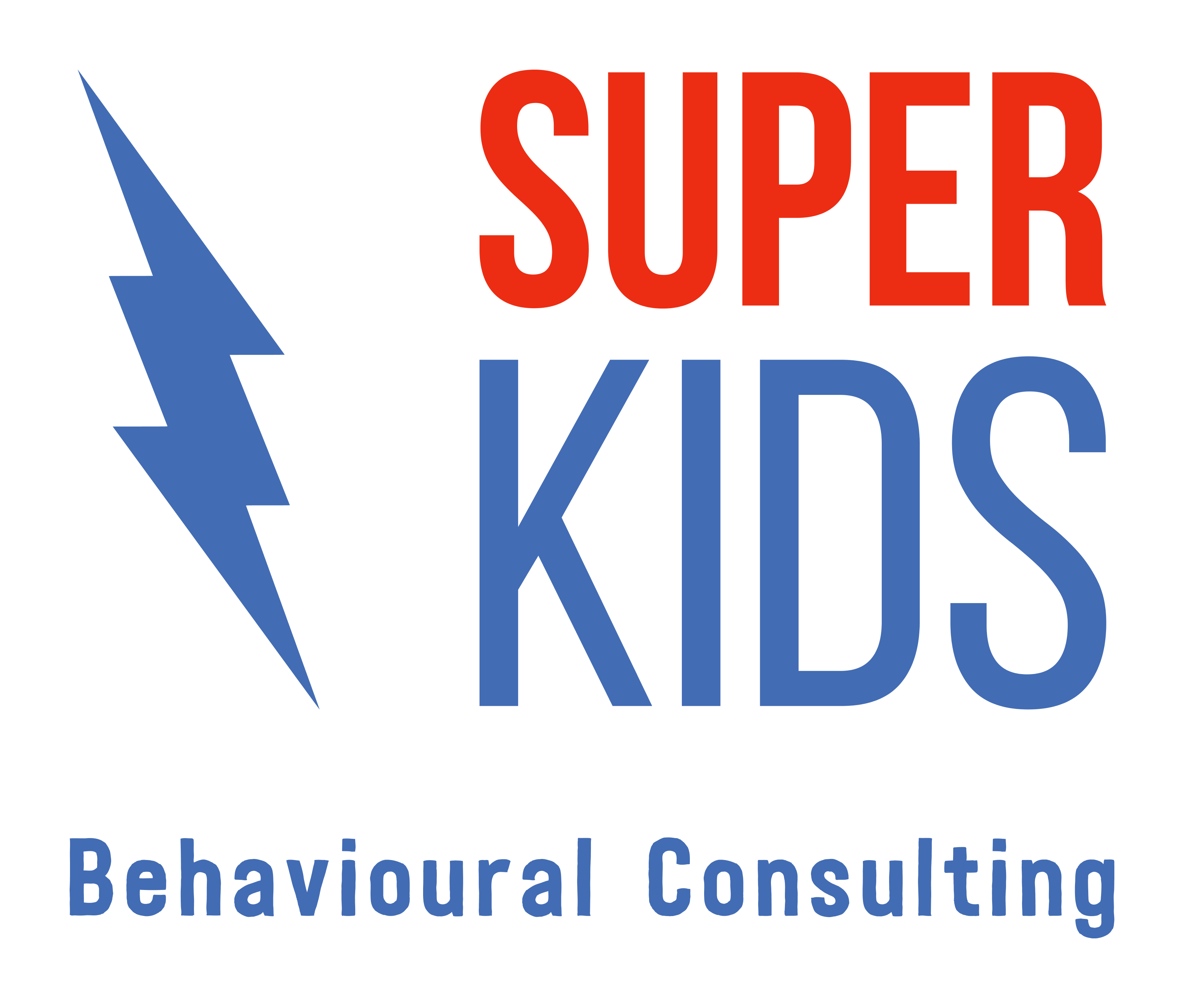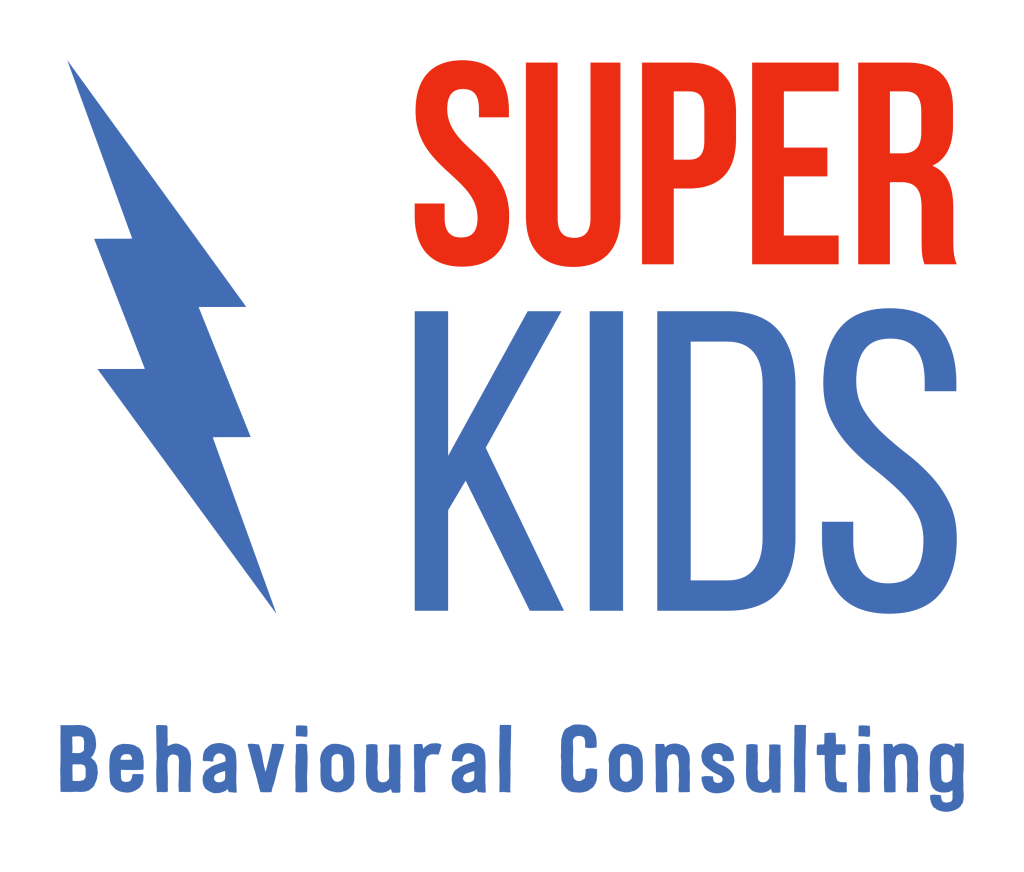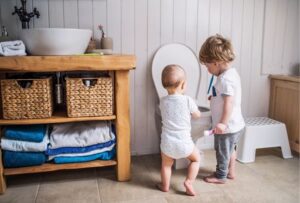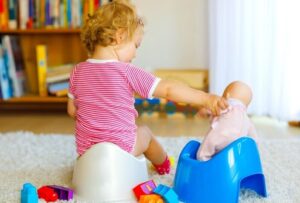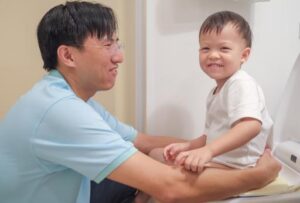What Undergarments Should My Child Wear for Toilet Training

Renee Collins
Clinical Director
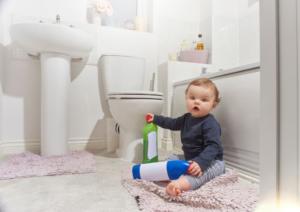
What your child wears during toilet training may be more important than you realise! There are different types of undergarments that you may choose to put your child in during toilet training. This may be bare training pants (like continence underpants), cotton underpants, disposable nappies, disposable pull-ups or just a bare bottom. Let’s review the advantages and disadvantages of each and find out what undergarments your child should wear for toilet training and which is most likely to help your child be toilet trained.
What are Training Pants?
Training pants (or continence underpants, similar to women’s period underpants) are a popular choice for parents beginning the toilet training journey. They are a hybrid between nappies and regular cotton underwear, providing some absorbency while allowing children to feel wetness, which helps them potentially notice when they’ve had an accident.
Should my Child Wear Training Pants?
Benefits of Training Pants
- Absorbency: While not as absorbent as nappies, training pants can handle minor accidents, which is beneficial during the early stages of toilet training.
- Eco-Friendly: Reusable and environmentally friendly, these reduce waste compared to disposable options.
- Cost-Effective: While the initial cost may be higher, they save money in the long run.
- Encouragement: Wearing training pants helps children feel like they are wearing “big kid” underwear, encouraging them to transition out of nappies.
Drawbacks of Training Pants
- Limited Absorbency: They may not handle larger accidents as well as diapers, leading to potential messes.
- Comfort: Some children may find training pants less comfortable due to their bulkiness when compared to regular cotton underwear.
- Frequent Washing: Requires regular washing, which may be inconvenient for some parents.
- Slow dry time: These may take up to a day to dry and so you will need to own a few pairs.
Should my Child Wear Regular Cotton Underwear?
Regular cotton underwear is usually the end goal that we’re working towards. They should be quick and easy for your child to get up and down. They come in various fun designs and characters.
Benefits of Regular Cotton Underwear
- Comfort and Fit: Provides a snug fit and comfort, allowing children to move naturally.
- Encouragement: Wearing regular underwear can boost a child’s confidence and create a sense of independence.
- Variety: Available in many styles, colours, and designs to suit your child’s preferences.
Drawbacks of Regular Underwear
- No Absorbency: Offers no protection against accidents.
- Potential Mess: Accidents may lead to more significant messes, especially when first transitioning to regular underwear.
Should my Child Wear Pull-Ups?
Pull-ups are similar to disposable training pants but often more absorbent. They are designed to be easy for toddlers to pull up and down, mimicking the action of using regular underwear.
Benefits of Pull-Ups
- Easy to Use: Encourages independence as children learn to pull them up and down like regular underwear.
- Absorbency: Offers more absorbency than cloth training underwear and is therefore suitable for nighttime or longer outings.
- Appeal: Fun designs and characters make them more appealing to children.
Drawbacks of Pull-Ups
- Confusion: Some children may not differentiate between underpants, pull-ups and nappies, potentially slowing the training process.
- Cost: More expensive than cloth options, especially if used for an extended period.
Should my Child Wear Disposable Nappies?
Disposable nappies are single-use nappies that have side tabs and usually require the child to lie down for adults to be able to put them into it.
Benefits of Disposable Nappies
- Absorbency: Offers more absorbency than cloth training underwear and is therefore suitable for nighttime or longer outings.
- Less cleaning: Lower effort for the caregiver if the child has an accident.
Drawbacks of Disposable Nappies
- Confusion: Some children may not differentiate between underpants and nappies, potentially slowing the training process.
- Cost: More expensive than reusable options, especially if used for an extended period.
We we Try the Bare-bottom Approach?
The Bare-bottom approach is when your child does not wear anything covering their genitals and they’re naked from the waist down. This approach usually means that you stay home for an intensive period and if you must leave the house, it is recommended your child wear loose-fitting pants with nothing underneath when they’re out or at daycare.
Benefits of Bare Bottom
- Speed: Fast to get them to sit on the toilet when you see warning signs as you do not need to remove clothing or undergarments.
- Low Cost & Eco-friendly: No need to purchase reusable or disposable undergarments.
Drawbacks of the Bare Bottom approach
- No Absorbency: Offers no protection against accidents.
- Potential Mess: Accidents may lead to more significant messes as there is nothing to absorb or catch.
- Not a long-term solution: You will need to introduce a covering when leaving the house.
- Hygiene: Less hygienic as they’re not wearing anything to cover their genitals.
So which is the best undergarment to wear when toilet training?
Research suggests that toileting performance often improves when underwear is used rather than disposable pull-ups or nappies. However, there are no research studies investigating the effect of training pants or a bare-bottom approach on toilet training success.
The research on undergarment type suggests putting your child in cotton underpants can be quite effective for up to 40-50% of children (Simon & Thompson, 2004; Greer et al., 2016). This is true for both neurodiverse (such as autism) and neurotypical children. This option can be particularly effective if you combine putting your child in underwear and low-intensity toilet training such as periodically reminding your child to sit on the toilet and providing a reward when they’re successful. It’s thought that this is because the effects of accidents (e.g., wet pants) are more obvious for children in underpants compared to an absorbent nappy and the discomfort of wet pants after an accident may sometimes be unpleasant for some children. Regardless of why underwear is effective, a growing body of research suggests that caregivers should consider replacing diapers and pull-ons with underwear.
Some parents and caregivers are hesitant to remove absorbent undergarments because their child is not toilet trained yet. Wet nappies often provide a rationale for their own continued use (i.e., the fact that they are wet indicates the need for their use). However, wearing a nappy and urinating in it is what your child has been taught to do their whole life! This is often the most comfortable thing for them to do, so they need to be taught that the toilet is instead where they need to go. Therefore, before assuming that they cannot be in cotton underpants because they still wee and poo in their nappy, it may be more accurately determined through the use of out-of-nappy tests. You can do this by placing your child in cotton underpants for a few days and then reviewing their success (Tarbox, et al., 2004). It is important to explore whether or not ongoing nappy or pull-up use allows accidents and delays toilet training.
Whatever undergarment you choose, the clothing you put over the top, should be easy and quick for your child to remove independently. Elasticated waists are recommended over zips or buttons. We always want your child to be as independent as possible, and this will also allow them to do it themselves!
Make sure you consider what undergarment you’re going to dress your child in for toilet training and then consider reviewing this after a few days or weeks, based on their success. The cotton underpants are most likely going to help them toilet train faster, but this approach can be messier and require more input from caregivers. However, given the possible likelihood of success for this change alone, it is likely worth a try!
References:
- Simon, J. L., & Thompson, R. H. (2006). The effects of undergarment type on the urinary continence of toddlers. Journal of Applied Behavior Analysis, 39, 363–368. doi: 10.1901/jaba.2006.124-05
- Tarbox, R. S. F., Williams, W. L., & Friman, P. C. (2004). Extended diaper wearing: Effects on continence in and out of the diaper. Journal of Applied Behavior Analysis, 37, 97–100. doi: 10.1901/jaba.2004.37-97
- Turpin, J., Jaggears, A., Cagliani, R., & Snyder, S. K. (2024). Effects of Diaper Removal and a Toilet Training Package for Early Childhood Students with Intellectual and Developmental Disabilities. Education and Training in Autism and Developmental Disabilities, 59(1), 59-70.
Super Kids acknowledges each individual’s personal preference to use identity-first or person-first language to describe themselves or their loved one. We interchangeably use both language conventions and therefore refer to both Autistic children and children with Autism.
